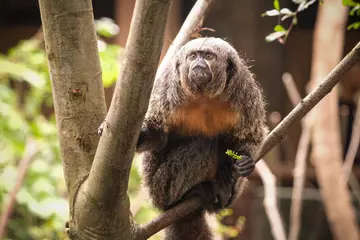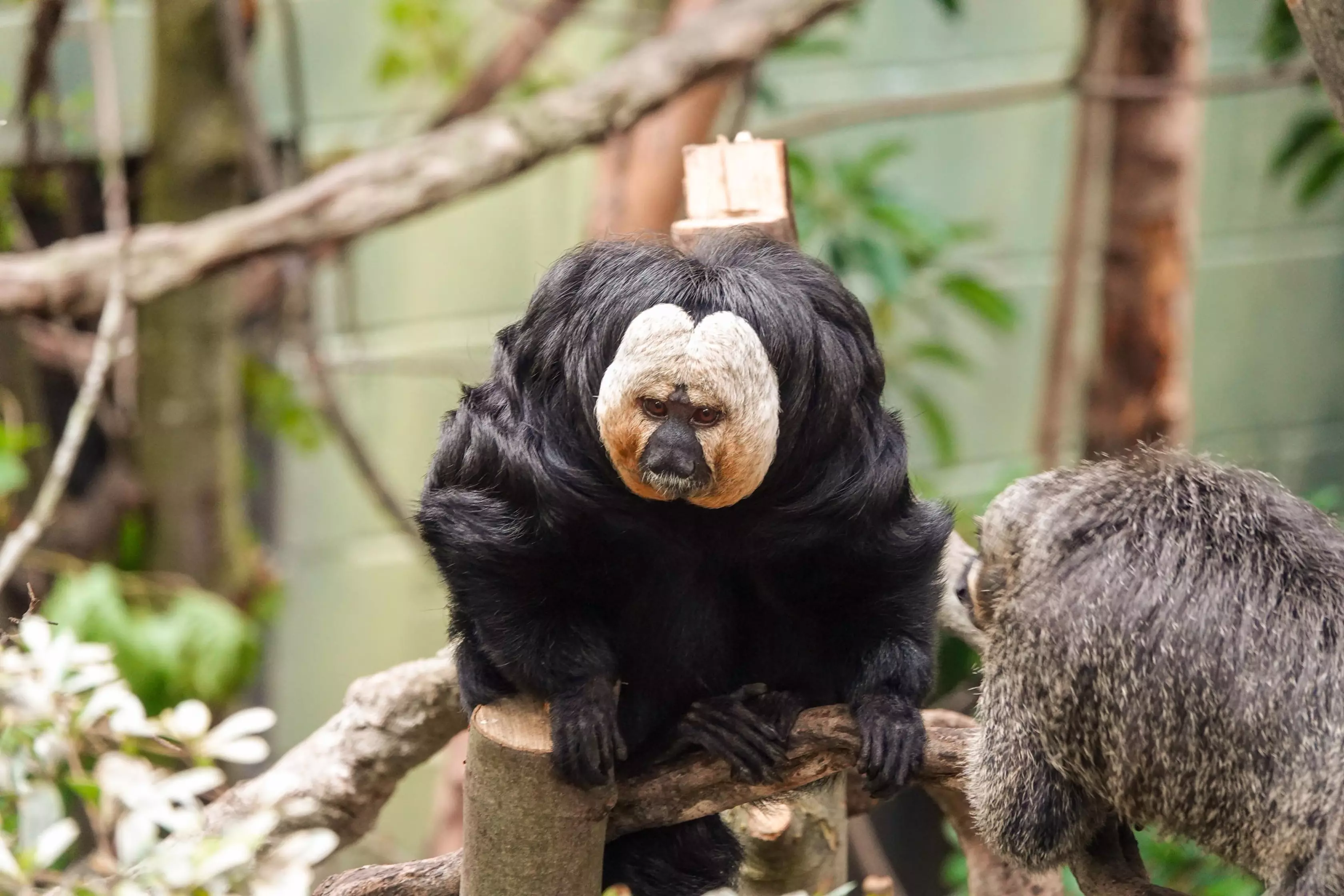
White-faced saki monkey facts
- White-faced saki monkeys are also known as "flying monkeys" because of their leaping style of locomotion.
- They are preyed upon by harpy eagles, jaguars, pumas and even anacondas!
- White faced-saki monkeys can communicate using scent to mark their territory. You might spot our monkeys rubbing their necks on branches to leave behind scent from special scent glands.
- Unlike most primates, white-faced saki monkeys don't grip objects between their thumb and index finger. Instead, they use their index and middle fingers.

What do white-faced saki monkeys look like?
White-faced saki monkeys are dimorphic, meaning that males and females look very different. Males have dark black fur on their bodies, with creamy coloured fur on their faces. Females and juveniles are brownish grey. Their thick fur helps them to stay dry when it rains in the rainforest. As babies, both males and females are brownish-grey to blend in with their mother's fur as she carries them around on her back. Males begin to develop their dark fur and white faces when they are a few months old.

Fia the white-faced saki monkey was born to mum Kaituma and dad Milagre in 2024.
What do white-faced saki monkeys eat?
Fruit, nuts, seeds and insects.
Where do white-faced saki monkeys live?
Brazil, French Guiana, Guyana, Suriname and Venezuela.
White-faced saki monkey threats
They are threatened from habitat loss and hunting by humans for meat. They are also sometimes captured by humans for the pet trade.
A place in London like no other, with trees filled with monkeys, snoozing sloths and bats flying overhead! Be transported to the Amazon rainforest and find out why it's one our most popular spots!
